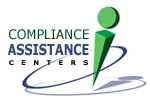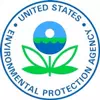Guide to JCAHO Environment of Care Standard 2.10
© 2005
Joint Commission on Accreditation of Healthcare Organizations.
Any use of any or all of the Joint Commission standards
and elements of performance beyond this particular tool
is strictly forbidden without the written permission
of the Joint Commission. Citations from JCAHO standards are ©2005 Joint Commission on Accreditation of Healthcare Organizations. Any use of any or all of the Joint Commission standards and elements of performance beyond this particular tool is strictly forbidden without the written permission of the Joint Commission. These pages do not reflect any changes in the standards made after 2005. |
Please
note: this page is under development. Contact
(734) 995-7989,
if you have questions or suggestions.
Introduction Table of Contents Checklist for 2.10.1 and 2.10.6
|
Environment of Care Standard 2.10: The organization identifies and manages its security risks. Element of Performance 1: Security Plan The hospital develops and maintains a written management plan describing the processes it implements to effectively manage the security of individuals served, staff and other people coming to the organization's facilities. |
This page provides
a set of criteria for evaluating the facility's written security
plan.
| (See also Element of Performance 6 below.) |
|
| |
The Security Plan
describes processes for considering the risks associated
with:
|
| |
These include the risks
of :
|
| |
The plan describes processes and procedures for emergency preparedness to address potential hazardous material situations (rule cites). |
| The Plan describes processes for: | |
| |
-- reducing use of hazardous materials, radioactive materials, petroleum products, pesticides and infectious materials to reduce security, spill and release risks to facility. |
| |
-- conserving energy and resources to preserve domestic resources for future Americans (sustainability) & reduce reliance on foreign supplies. |
| |
-- reducing waste generation to minimize inappropriate use of confidential material. |
| |
-- reducing waste generation to minimize potential for unauthorized access to the facility through loading docks and dumpsters. |
| |
|
|
Environment of Care Standard 2.10: The organization identifies and manages it security risks. Element of Performance 6: Control Access to Secure Areas The hospital controls access to and egress from security-sensitive areas. |
| |
The
Security Plan identifies
individuals and provides training for personnel with
access to:
|
| |
The
Security Plan considers which of the following storage
areas must be kept locked at all times:
|
| |
Hazardous material and waste storage areas are secure. Security 40 CFR 265.14 |
| |
Tanks are monitored and secure (rule cite). |
| |
Quantities of hazardous materials and waste that reach threshold values are reported to the Local Emergency Planning Committee. (rule cite) |
| |
Quantities of hazardous materials and waste kept on site are limited to improve security and minimize spill risk. |



